Travelling in 2019, the mystery of even truly remote places like Ninigo is somewhat compromised by the multitude of cruising blogs raving about it. Our little three boat flotilla may therefore have arrived with expectations on the high side as we anchored inside Heine Atoll, a dreamy lagoon just to the north of Ninigo.

Canoe play time on Heine

These siblings entertained us for hours with their antics
We were greeted by Lembke and Marta Phillip’s large family, spending their holidays there fishing, tending to chickens and gardens and simply enjoying the solitude away from their busy village on Pihun Island in Ninigo.
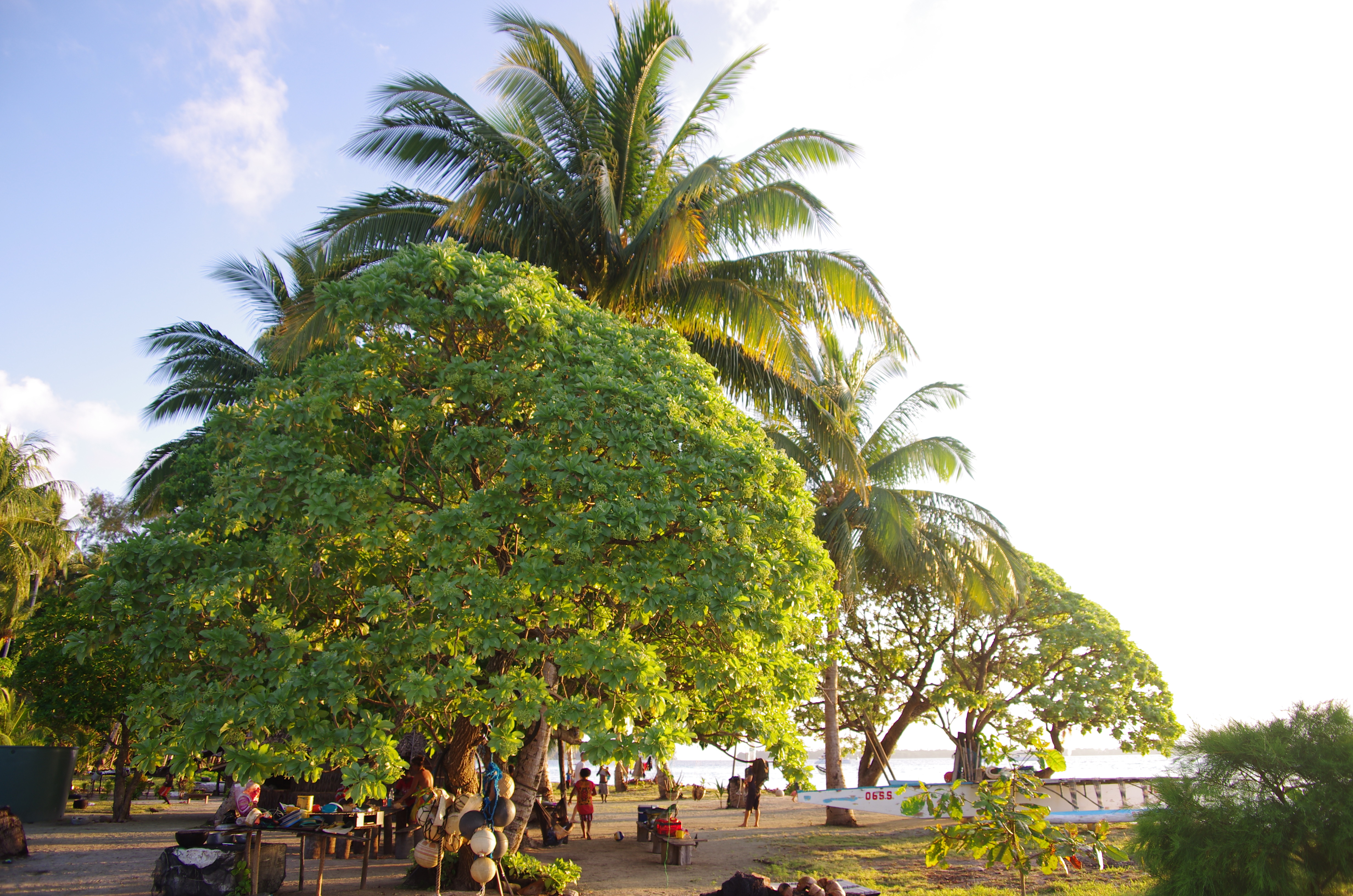
The Philip family holiday hang out
As soon as the anchor dug in, all three boats were invited for a meal. We shared a lovely dinner prepared by Marta and her daughters, consisting of fried banana, chicken stew, fried fish, cassava jelly cake and sweet potatoes, followed by a volleyball game.

Marta's kitchen
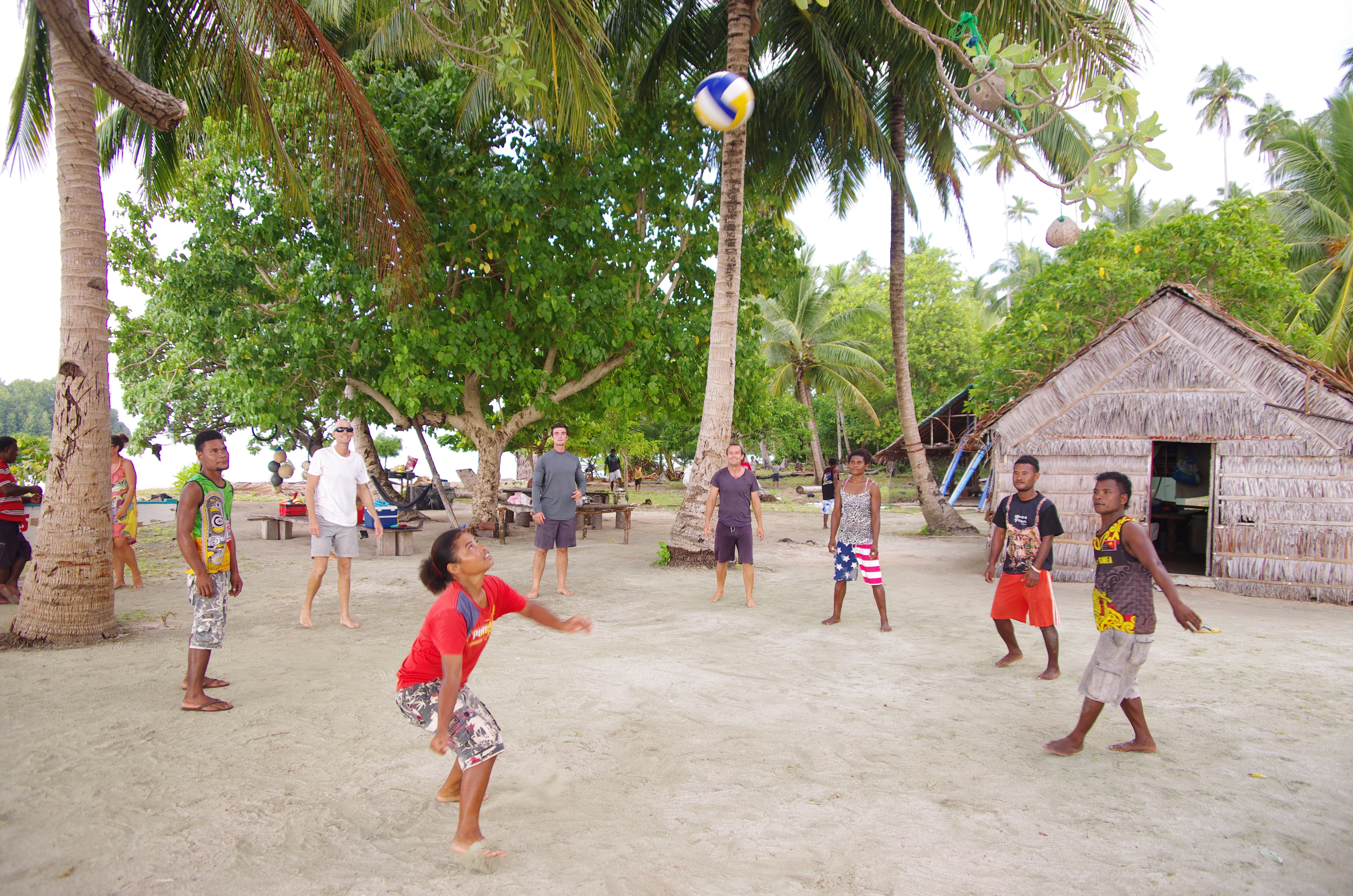
Volleyball before we set up the net
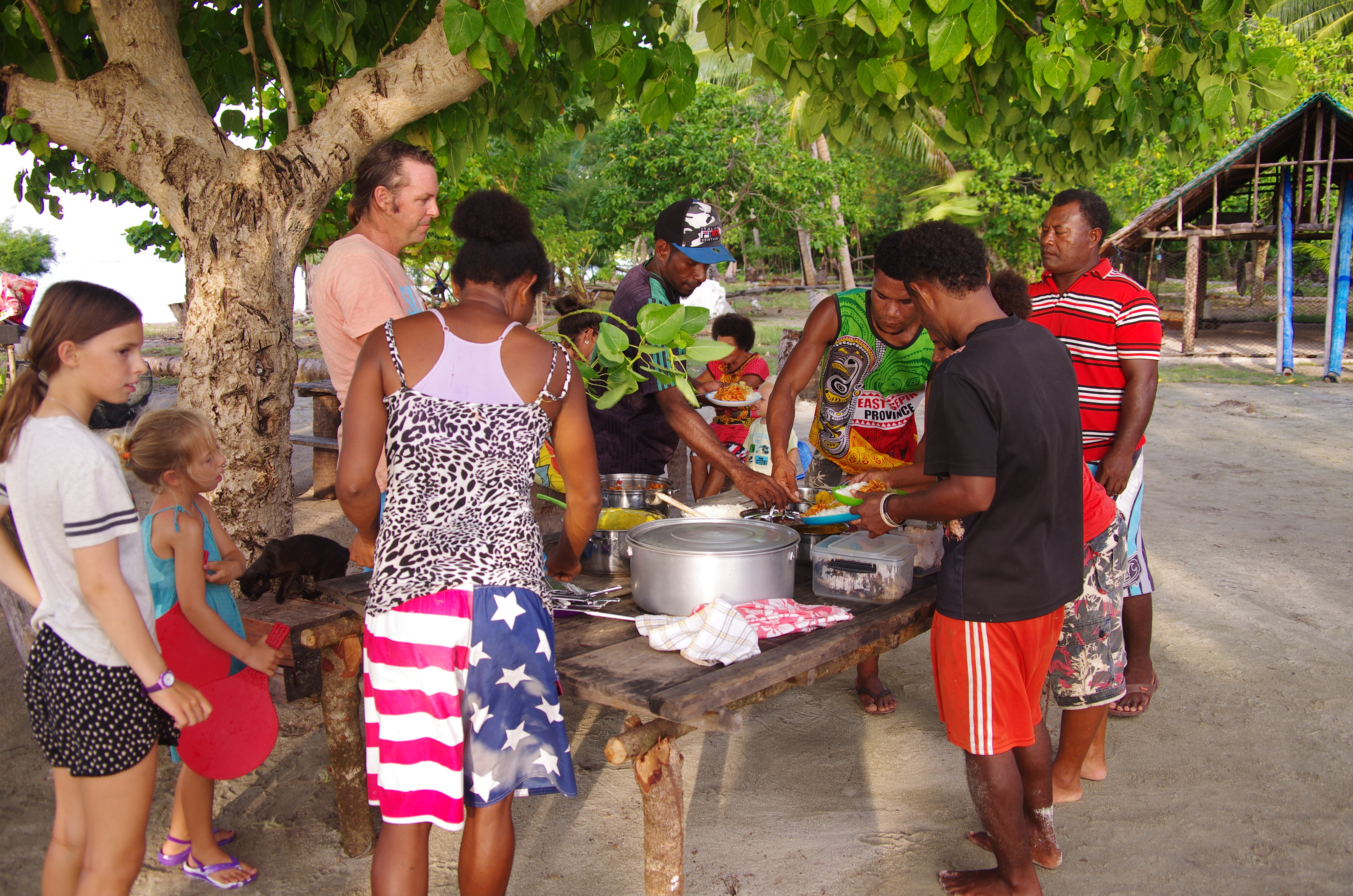
Self-serve table
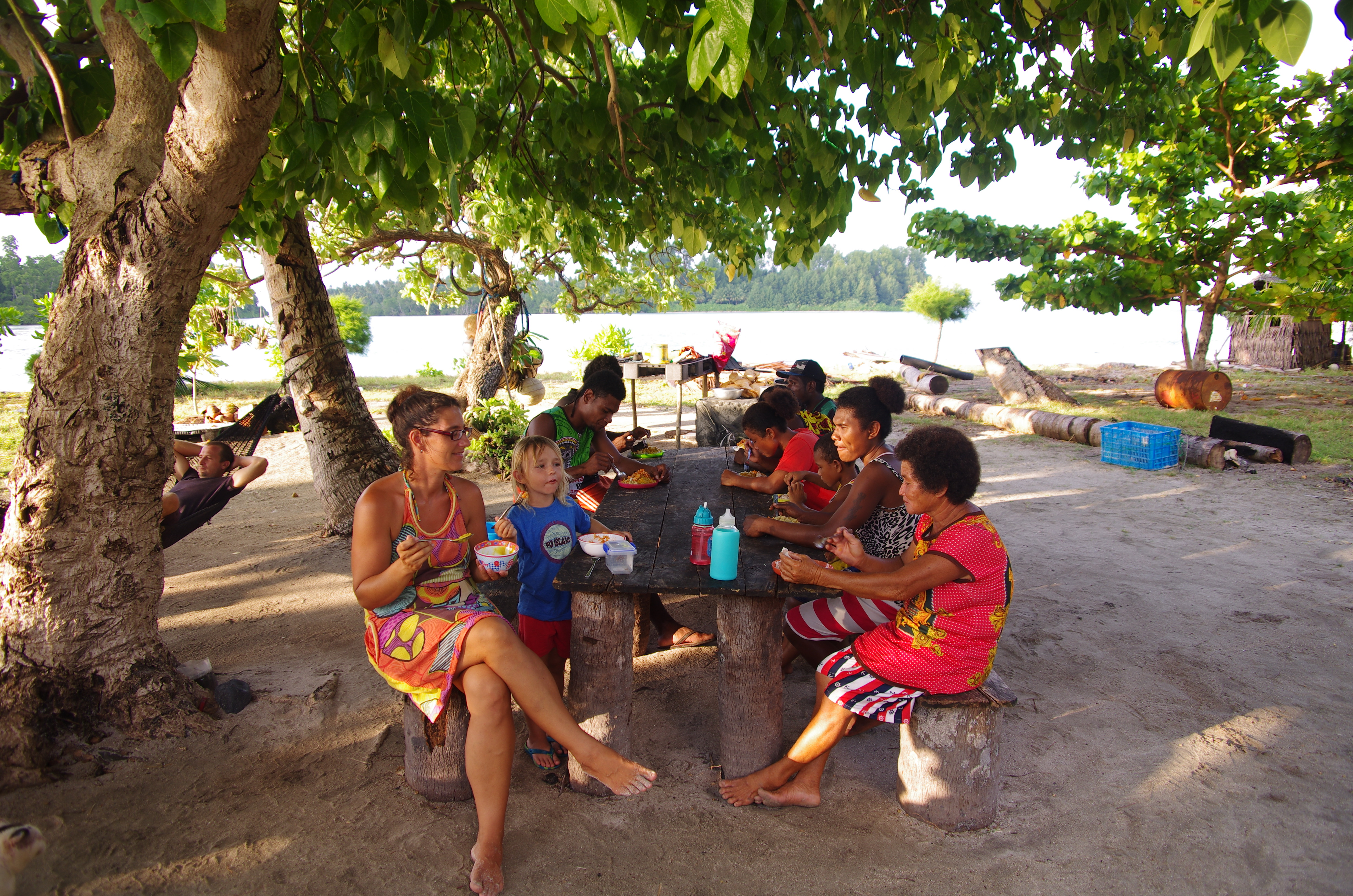
Dinner
The next day, it was our turn to cook dinner for everyone, again enjoyed in the family’s garden, then more volleyball again.
Heine was where I finally fulfilled my lifelong dream of sailing Moana style on an outrigger canoe with two locals and our friend Sayo from Family Circus. Let me tell you - these things go fast with a pretty mean heel once they get going. Heine atoll was treated to a hearty rendition of ‘We Know the Way’ to the chagrin of the two local sailors steering the thing. Cruising life has its highlights!

Moana preparing for take off
Graham and fellow wannabe hunters from the other two boats went coconut crab chasing in the mangroves late one afternoon. The expedition was led by Michael, a colourful member of the Philip family. In addition to the coconut crabs, they brought back many mosquito bites (no one thought to apply repellent) so we spent the night calculating the incubation period for malaria. Coconut crabs are kept alive tied up until meal time which sounds tortuous enough without the added complication of a persistent survival instinct. As such, they present a very high escape risk especially if you are a cruiser hosting them alive for the very first time. Now if like me, you find tales of captured animals traumatic, you better move on to the next paragraph. That night we were all gathered on Zig Zag for a traditional German St. Nicholas celebration when Jake returned from deck to calmly inform us there was only one coconut crab left tied up where there were previously two. A frantic search ensued - all hatches were open and the prospect of sleeping with a crab lurking did not excite the Zig Zag crew. Did I mention these things are huge? In the end, we spotted the poor creature half way up the mast. Irene climbed up with a pole to knock it down while Graham played catch with the bucket below. I provided strategic support with some well-timed screaming. Later that night, Family Circus returned to their boat to also find a crab missing, located the next morning. I was really glad we didn’t take any.

Koni and kids entertain us with local music
After a few more heavenly days of swimming, drinking coconuts and hanging out with the Philip family, we all sailed together to their village on Pihun Island. Befriending the family first was an ideal way to be introduced to the rest of the community and also meant we had a home base so to speak.
To kick things off on Pihun, we tagged along to their school graduation. The morning rain did not dampen the graduation spirit, with certificates handed out for student achievements and long speeches by various officials keeping everyone from the huge feast prepared to celebrate the occasion. Our modest contribution of a chocolate cake covered in Nutella was devoured by the local kids in less than 5 minutes and we don’t even have any photos to show for it!
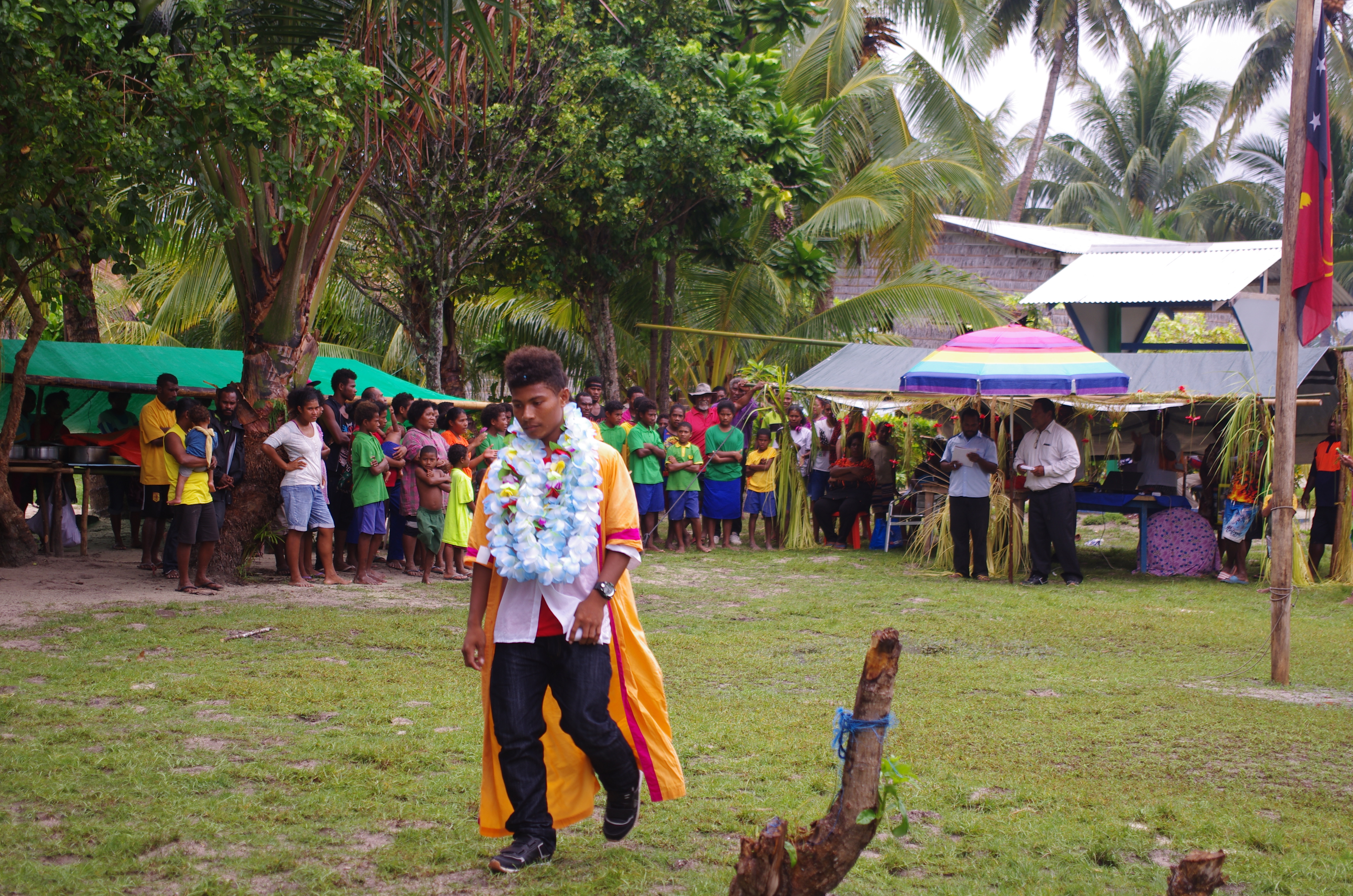
An award winner
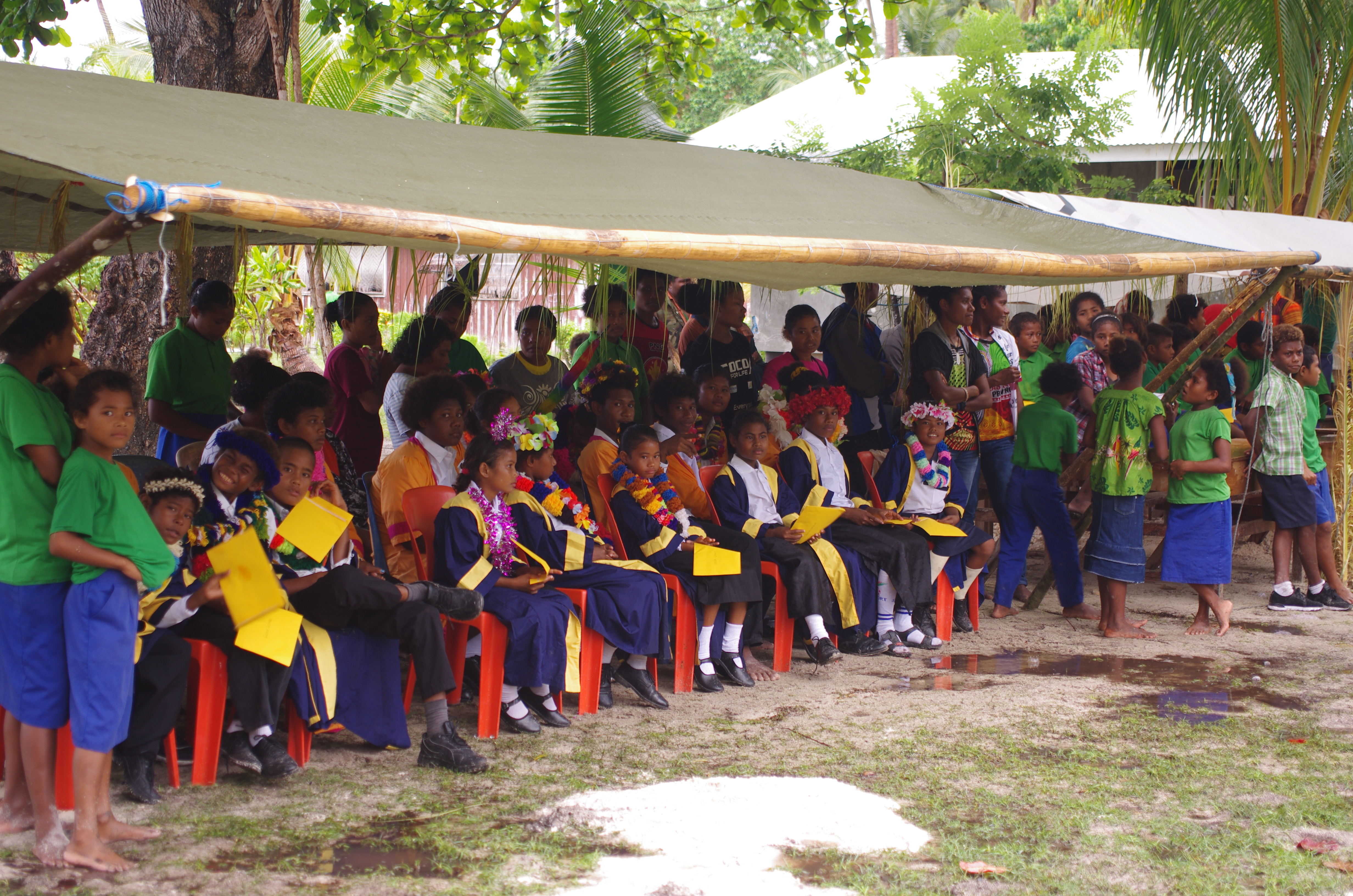
Bored students - this seems to be a universal thing at school graduations
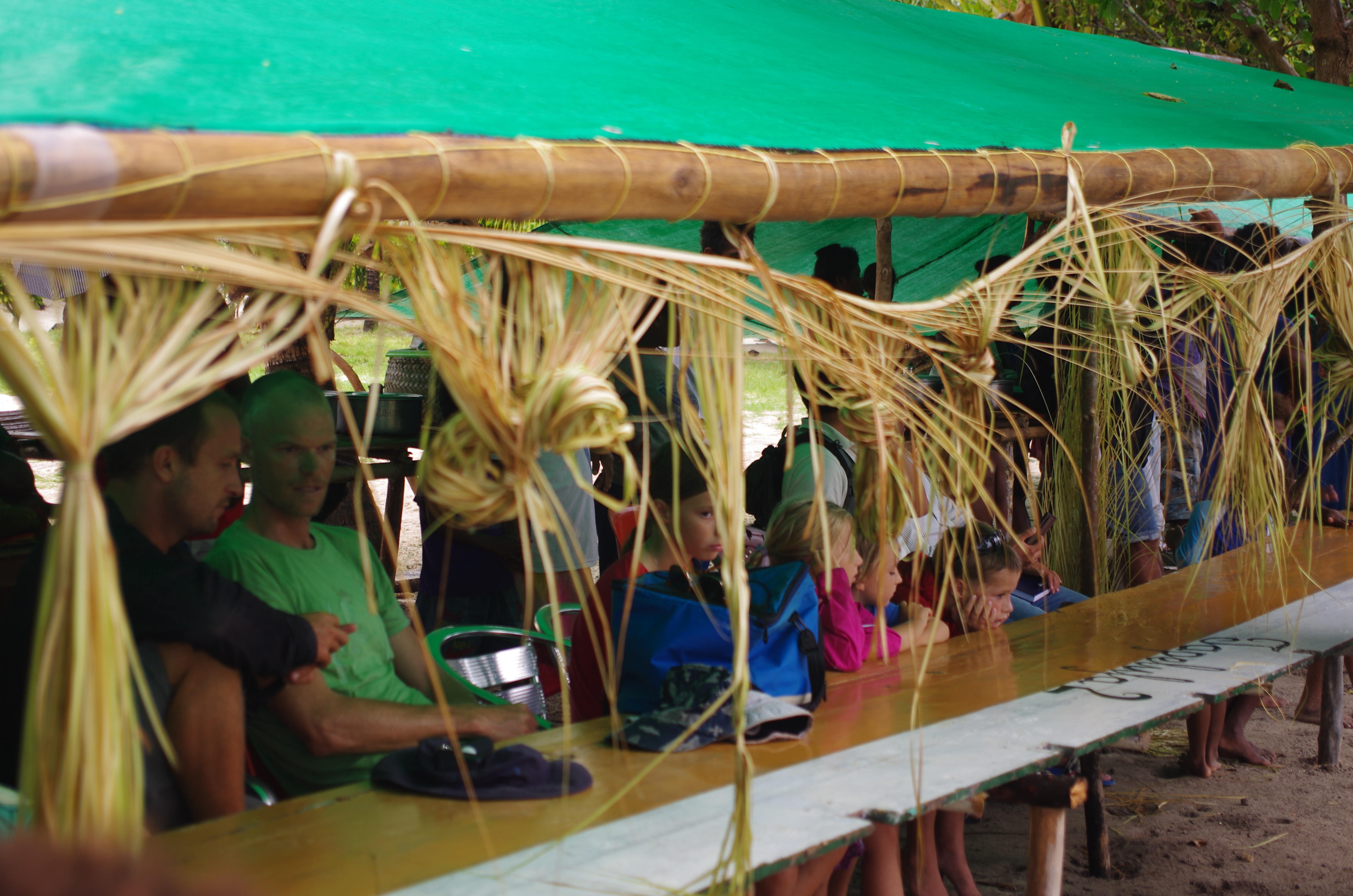
The dignitaires table
Another village novelty ( mixed with horror) was the caged cuscus we saw at a couple of houses. They catch them in the bush and keep them as pets. The creatures we saw were terrified but at least seemed well fed. As the village expands into the bush and the population grows they will probably become a thing of the past. Someone did say that they ruin the coconuts and on an island where coconuts are the main source of water and food, it does not bode well for the cuscus.
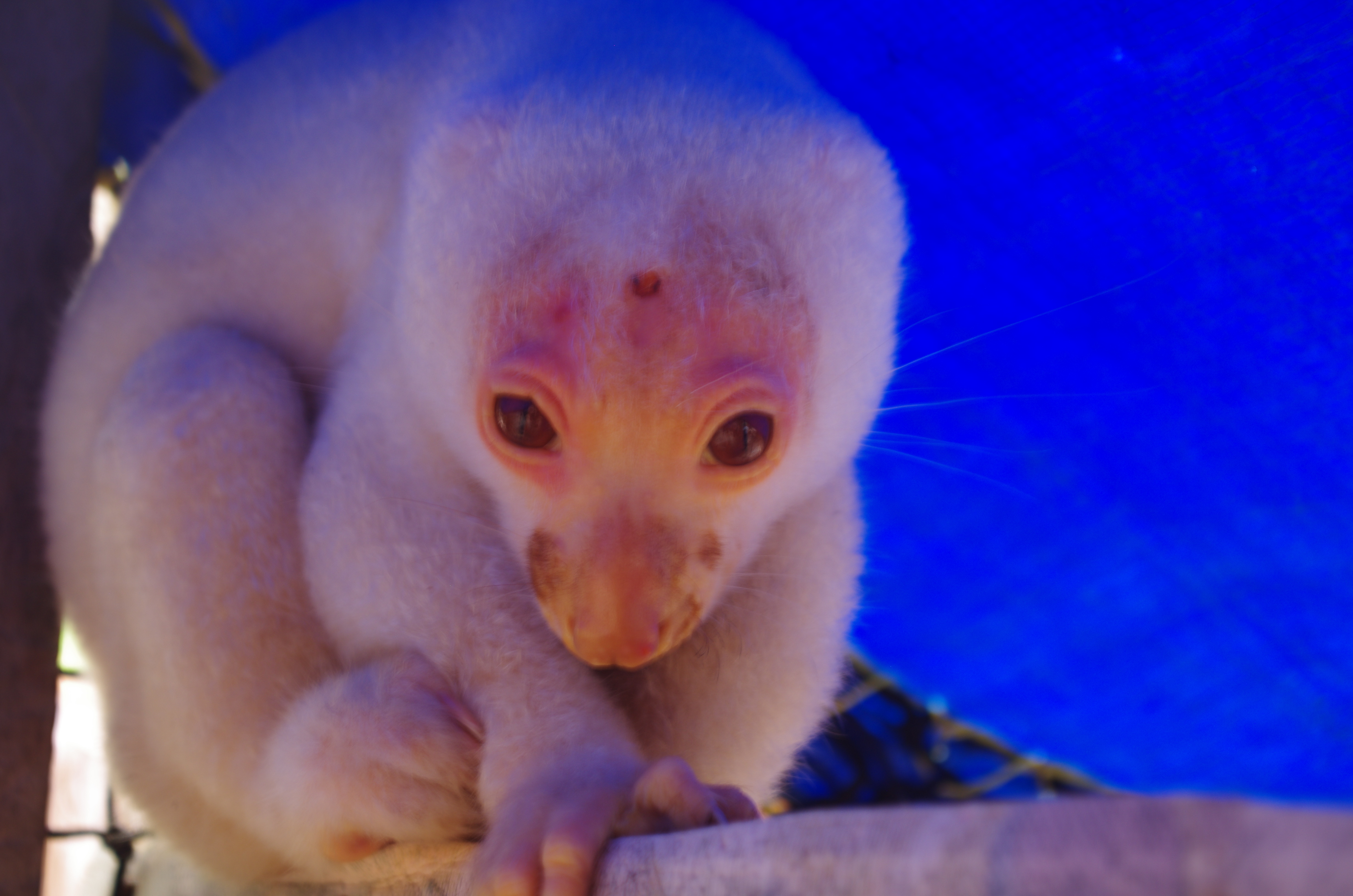
An albino cuscus
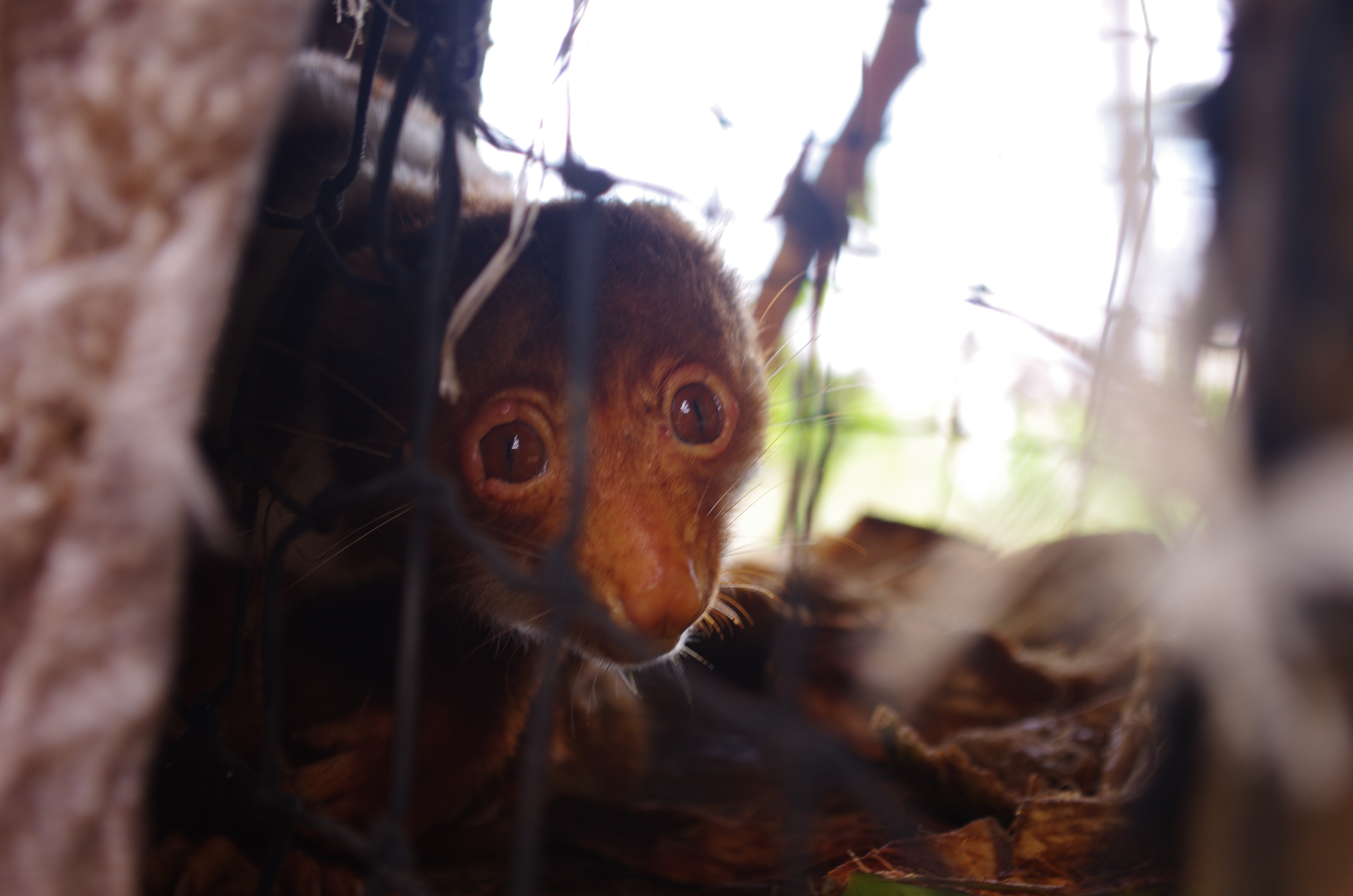
Regular cuscus
We idled the days away walking around the village and meeting locals, who were without exception warm, curious and eager to chat.
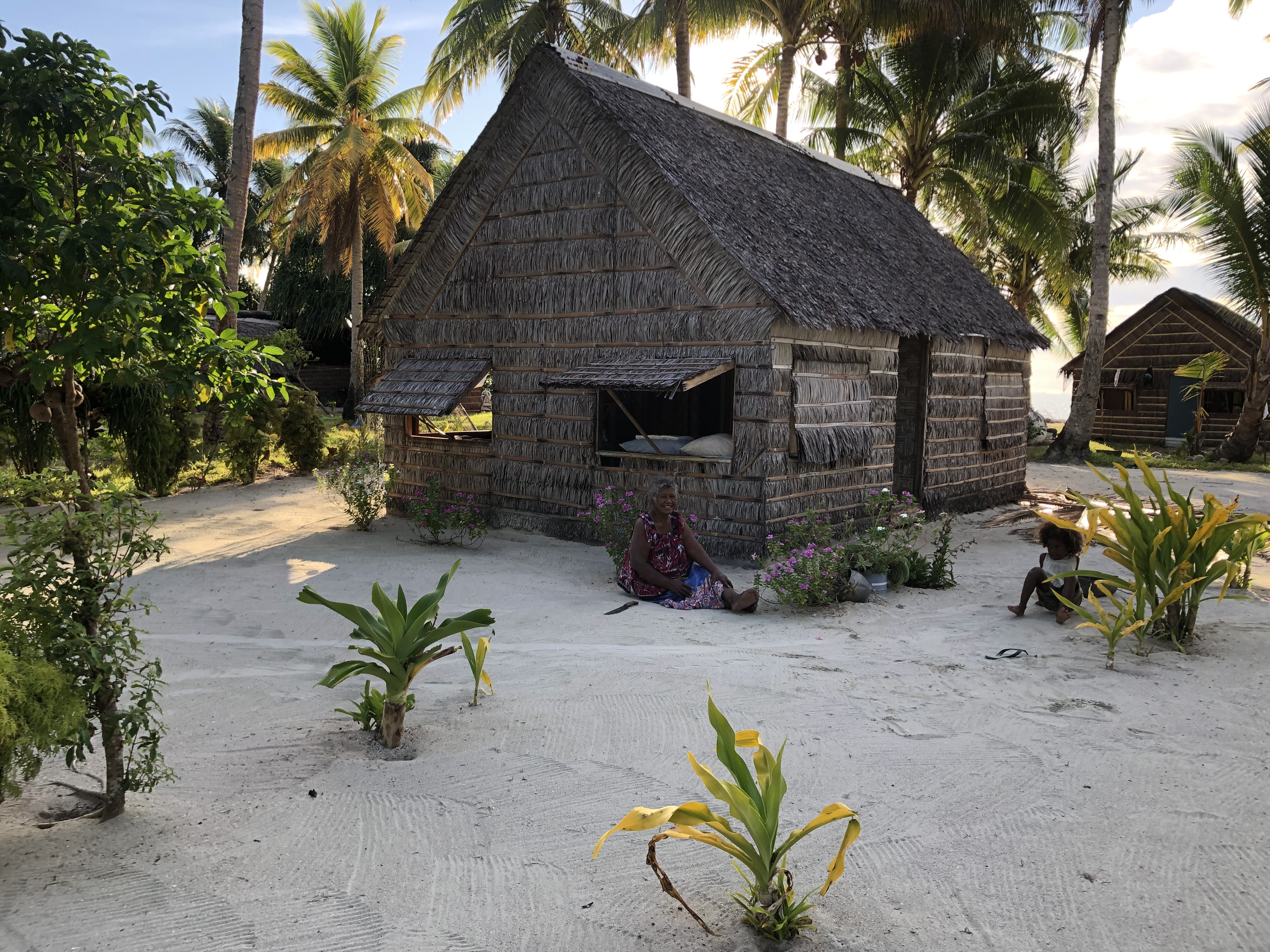
A typical village garden - immaculate
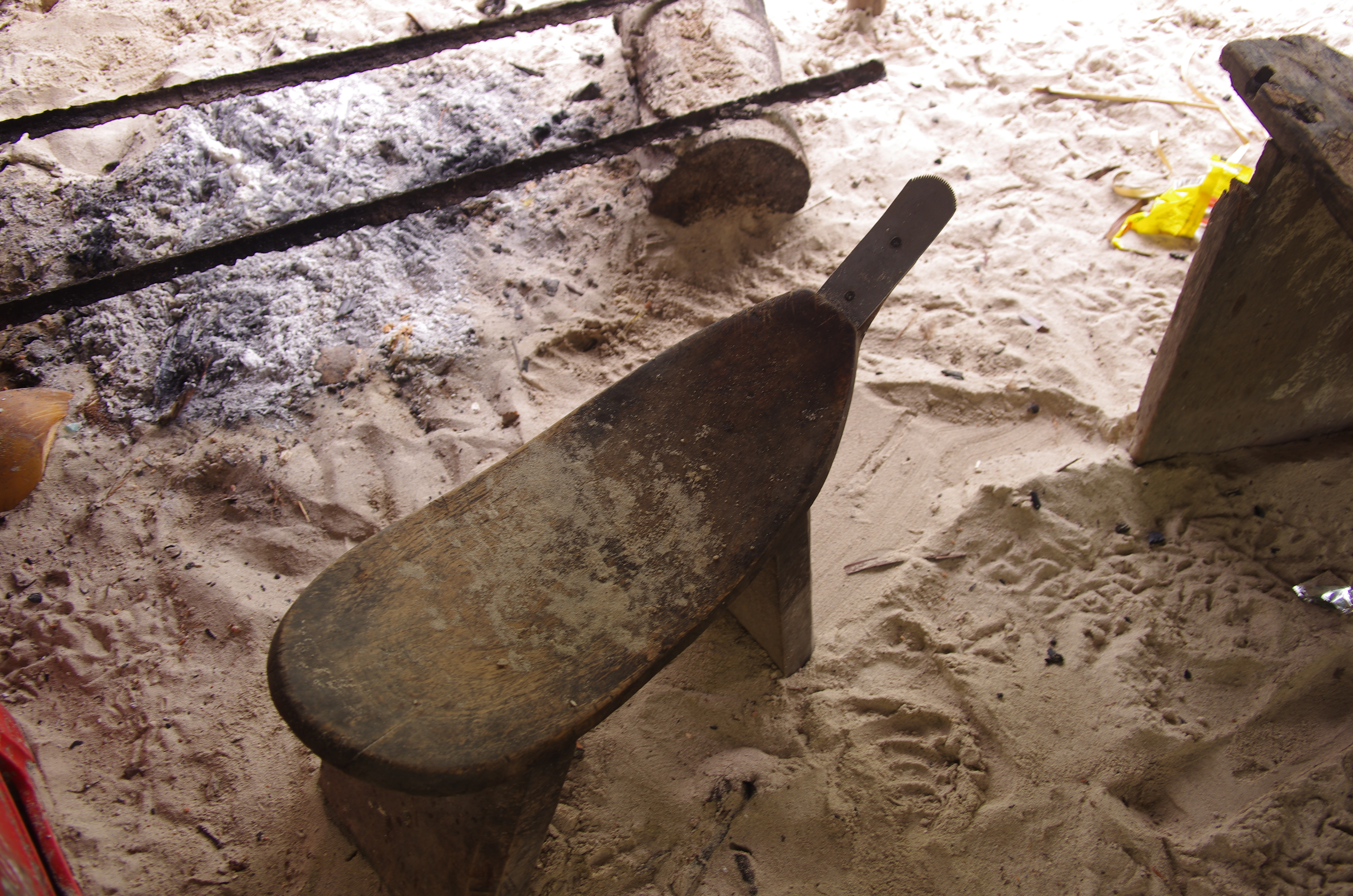
Coconut scraper
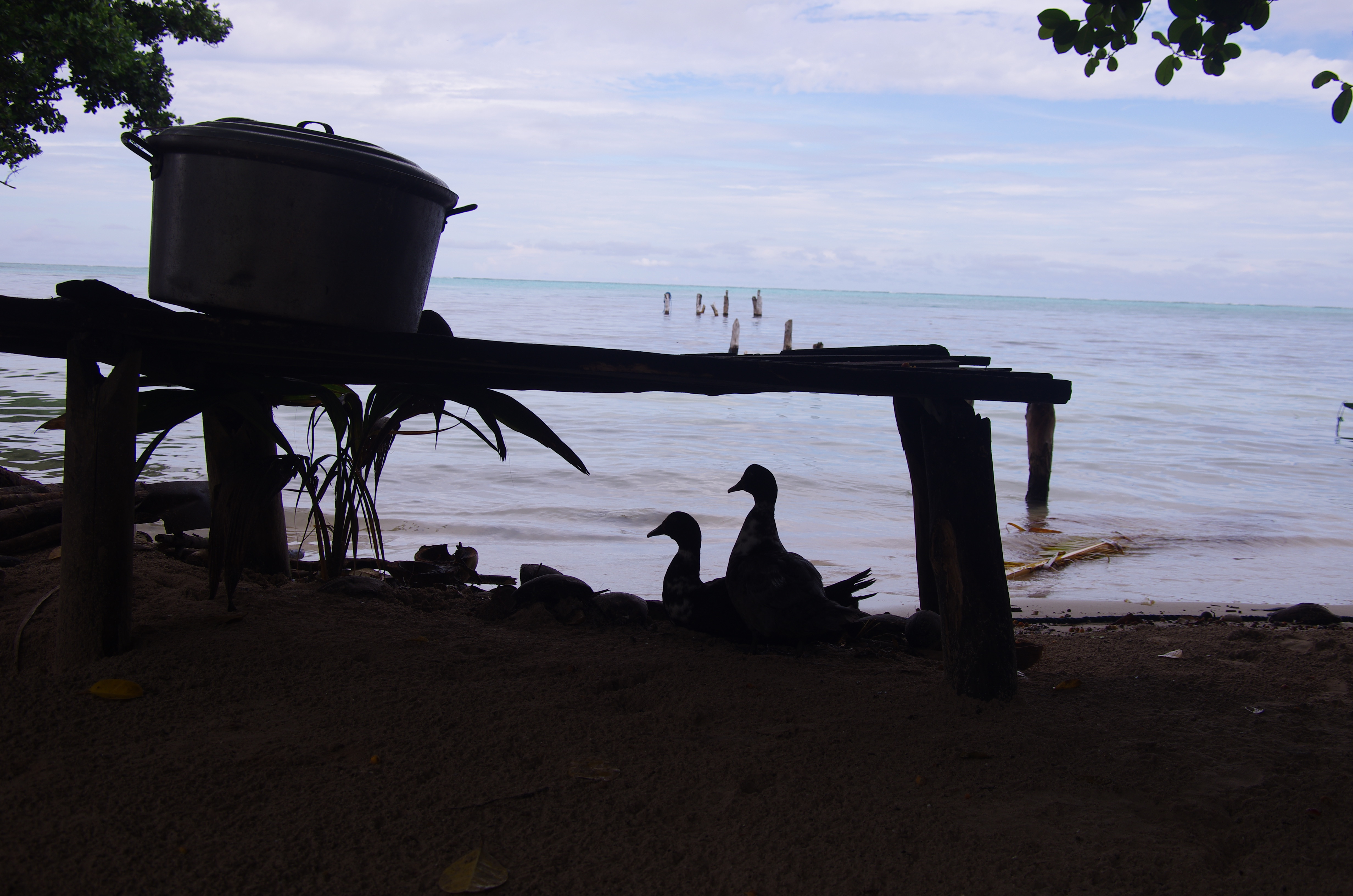
Ducks
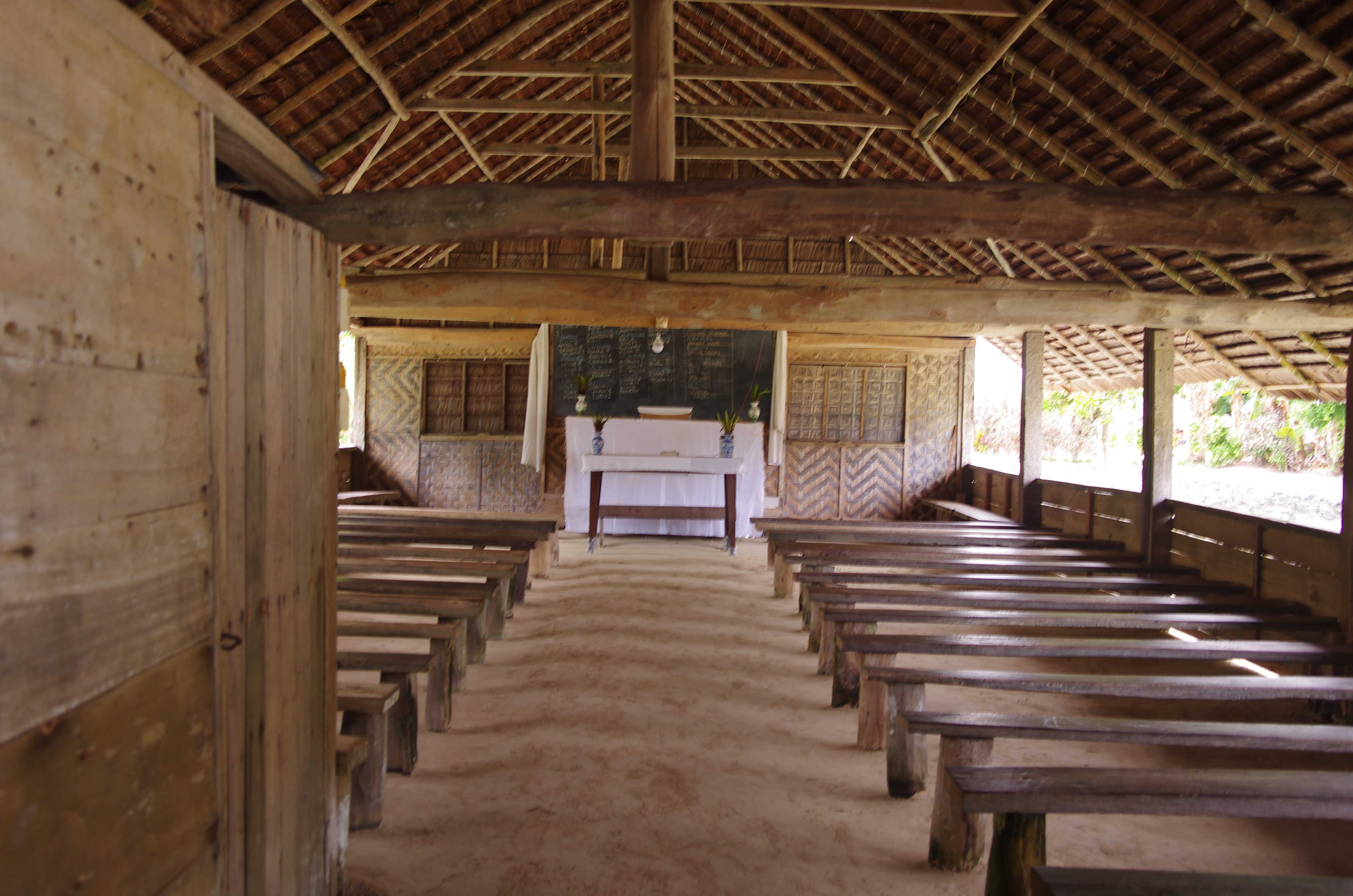
Church
I had a few kids following me around wherever I went and as we got more familiar, there was a lot of hand holding and laughter as they examined every mark on my skin.
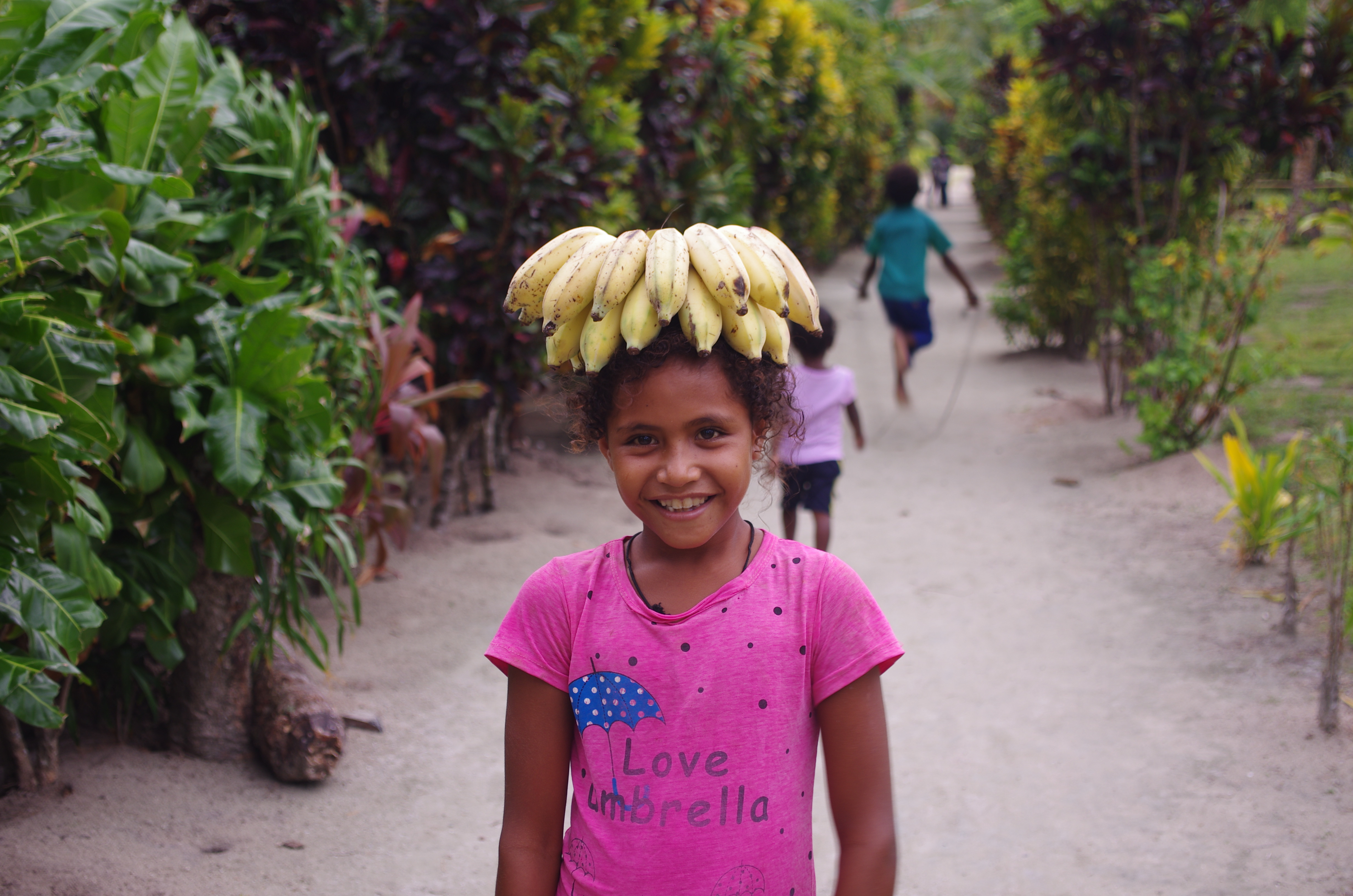
One of my village guides
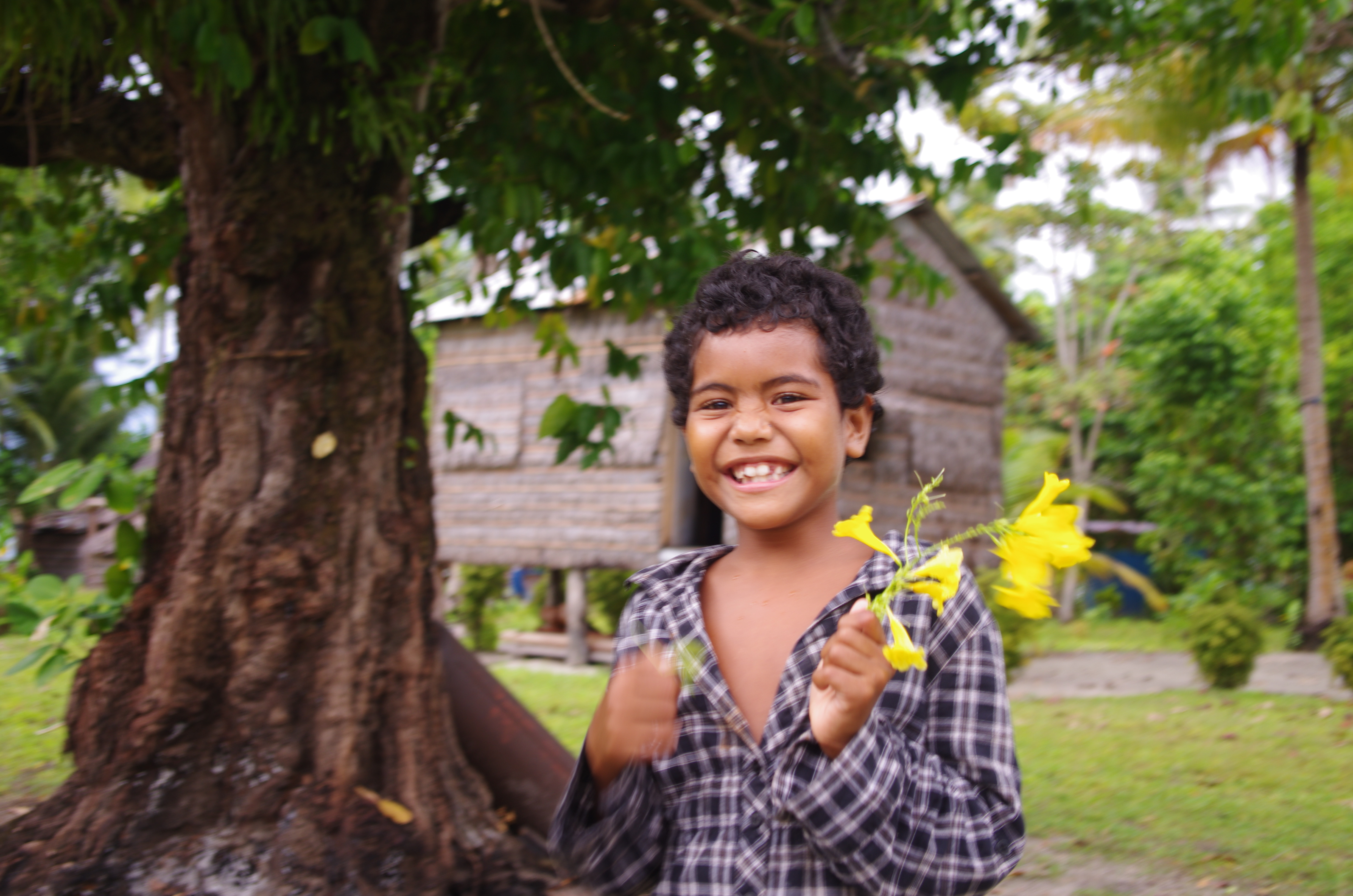
And another guide
The island seemed somewhat better supplied with outside goods compared to the southern PNG islands. Most huts were well built with sturdy timber frames, we saw solar panels, decent clothes, even a few phones and laptops.
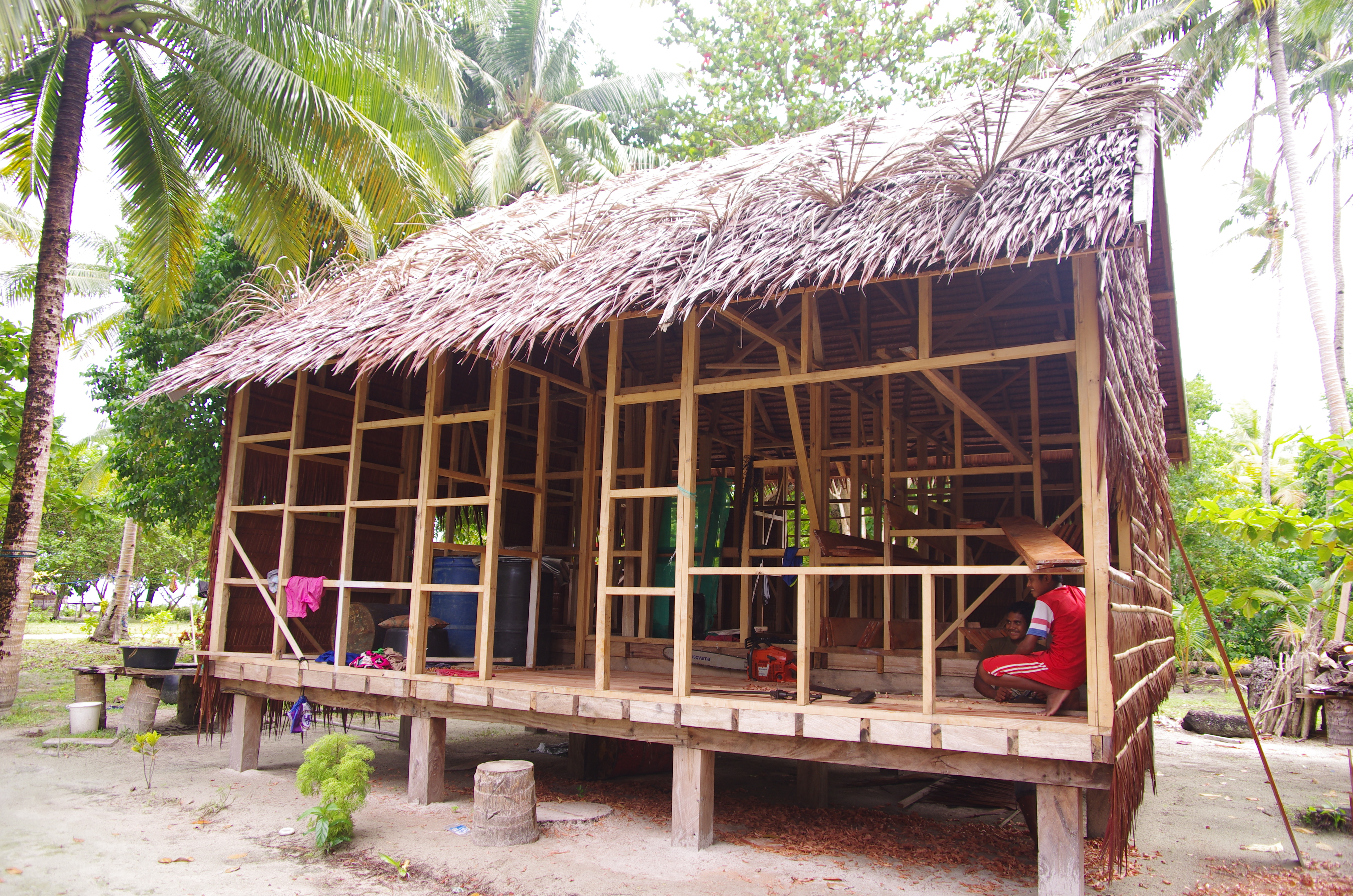
A house build in progress
Ninigo islands are on the trading route to SE Asia, with some business interactions evident - we met two Chinese businessmen who were there to negotiate lobster and fish prices with the locals. I found out later they pay 10 Kina per kilo of lobster, about $5 Australian. I told them how much we pay for it in Aus and I hope they renegotiate.
Now I don’t want to make it sound like people are wealthy here, the poverty is just not as acute for most as it is in the south. As an example, Stanley and Mevelyn, a young couple with 3 children who still live with their parents, are second in line to have a house built for them after some older siblings. What’s stopping the build is not a lack of timber - plenty of floating logs around, it is nails they have to save for, plus the fuel to get to a town to buy it of course.
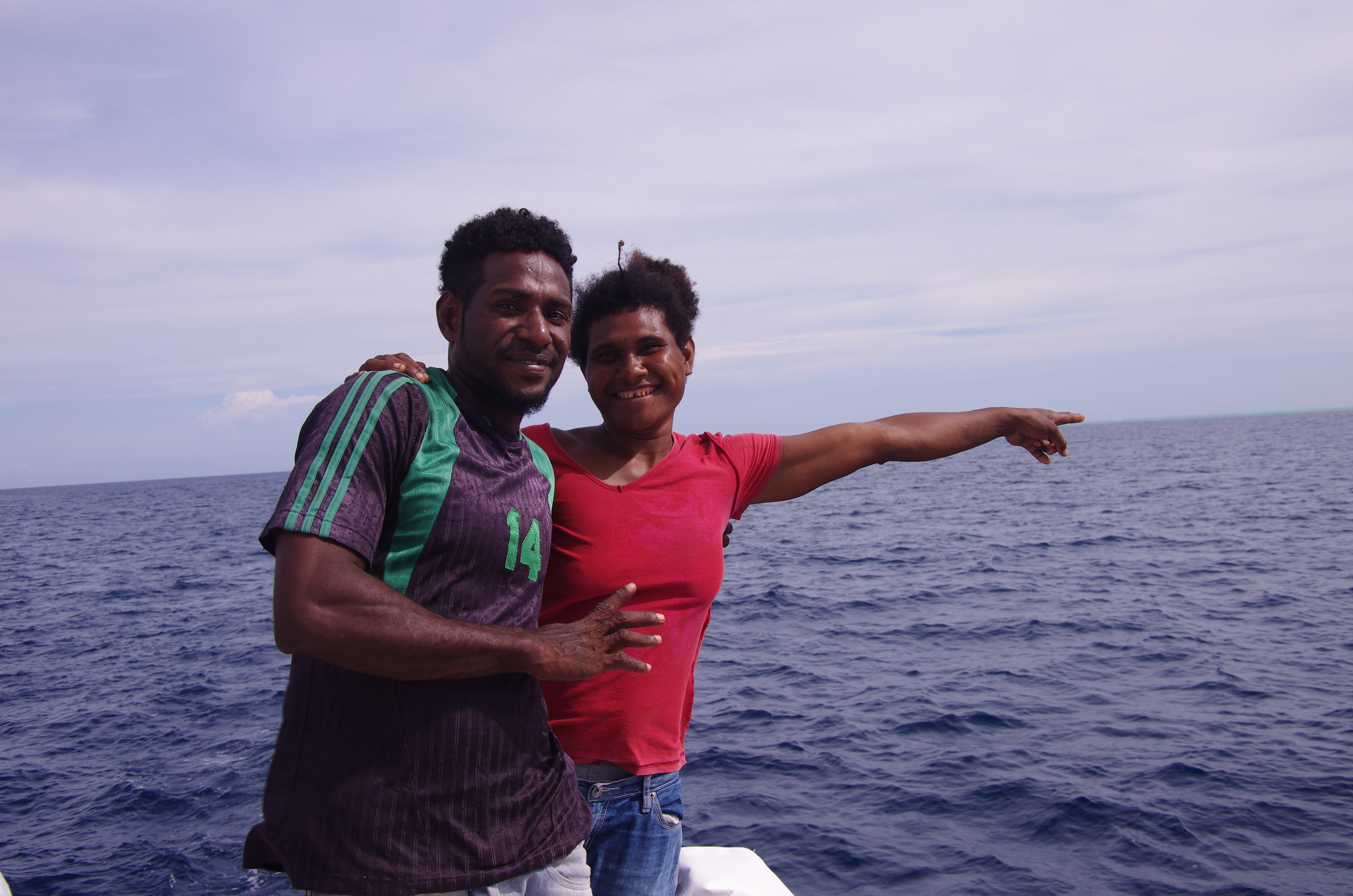
Stanley and Mevelyn sailing back to Pihun on Toc
On Ninigo as elsewhere in PNG, the harshness of island life is never more evident than when you encounter sick people. Diabetes is prevalent among the older generation and there is no medication for it, although the village clinic did seem to have medications (what I dont know, but the clinic and medicine cupboards sat wide open the whole time we were there, with Victor the young ‘medic’ from Manus, mainly partying outside with his friends and laughing at any medical questions put to him).
One day we visited Lani, a village aunty with diabetes (she is 67) who had recently developed a gangrenous foot as a consequence. Her extended family takes very good care of her, changing the bandages, disinfecting, giving painkillers but most important of all, holding a 24 hour vigil around her sickbed. It was heartening to see the loving care she receives and will continue to receive from young and old in her family.
On a more cheery note, our friends from Family Circus organised a sailing canoe race for one day with prizes donated by our three visiting boats. About 10 sailing canoes raced to the outer reaches of the lagoon and back while everyone gathered on the beach to watch.
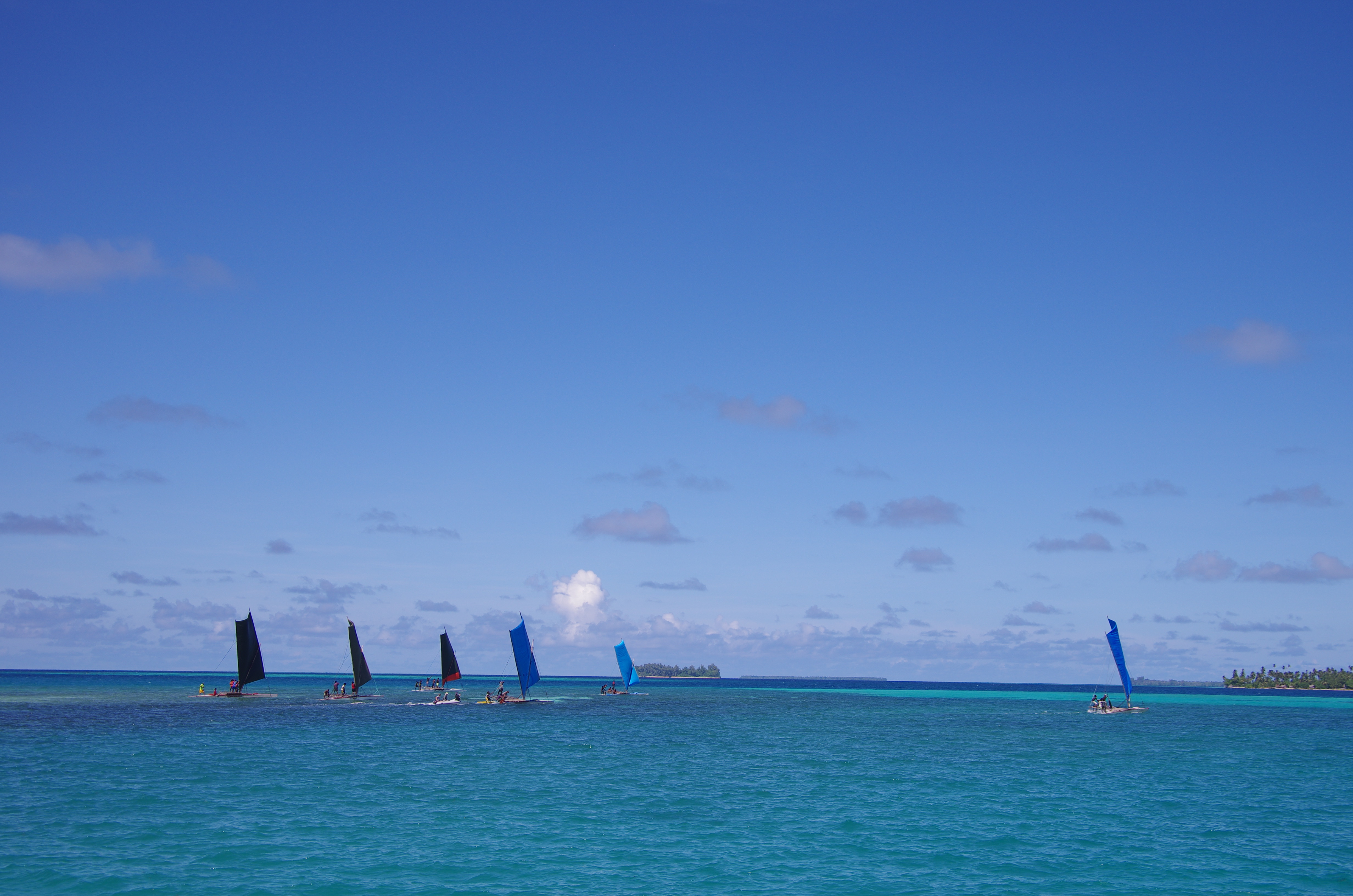
The race begins
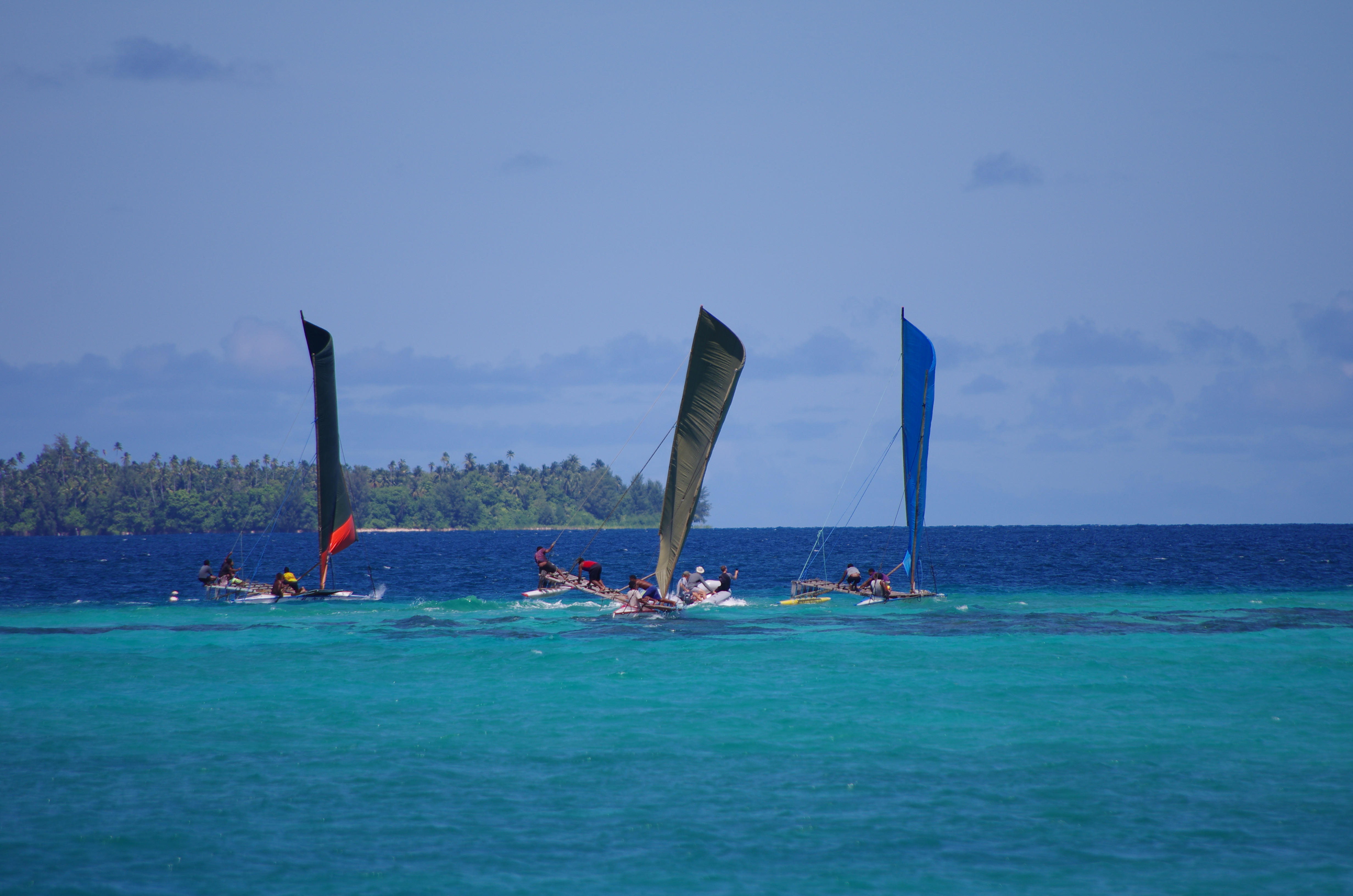
Racing back
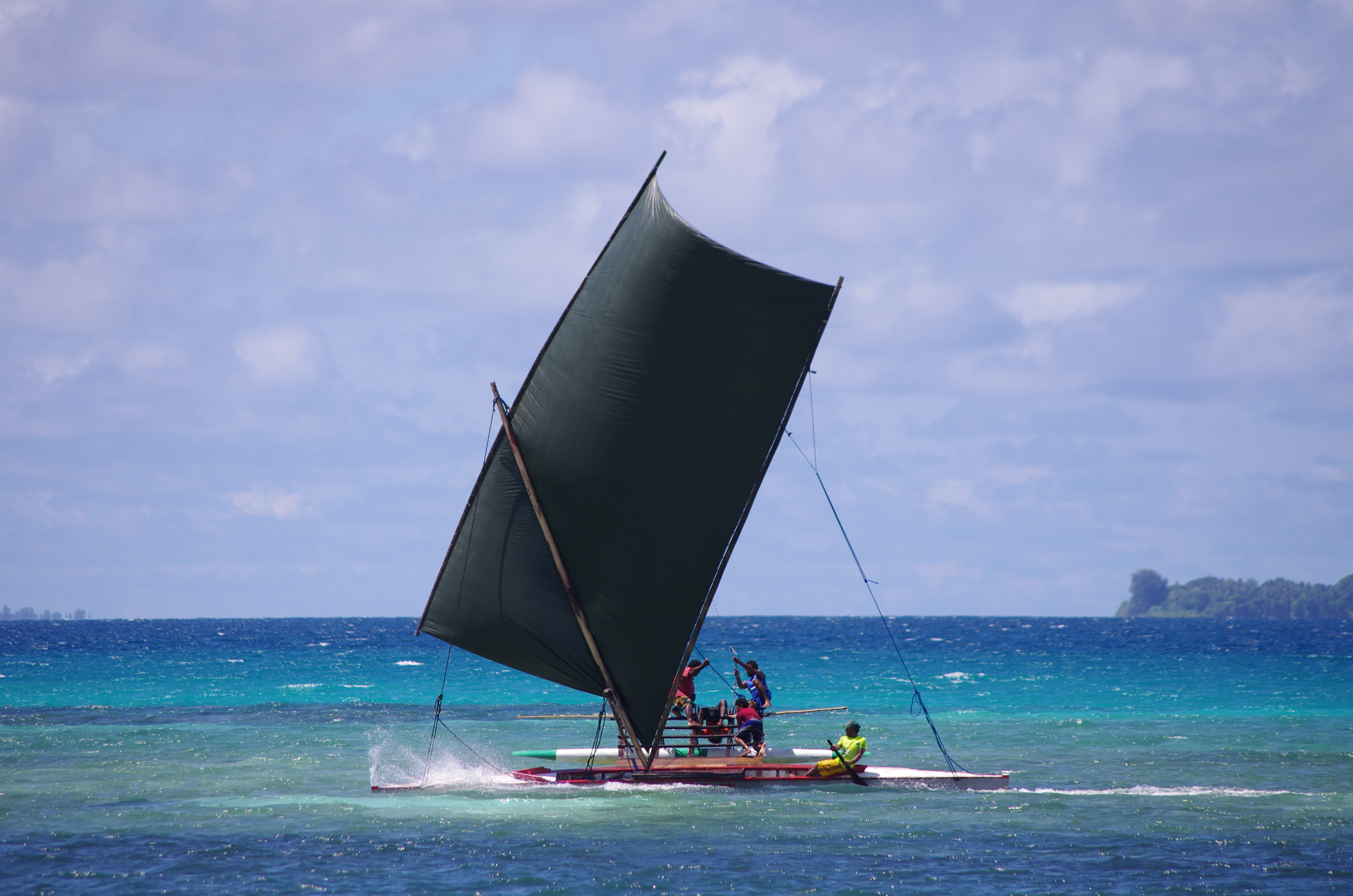
Winning canoe
Some controversy ensued during the presentation as the winning canoes apparently turned around earlier than others and murmurs of cheating could he heard for some days after. In any case, it was fun to watch but a shame it had to end the way it did.
We really didn’t want to leave Pihun but if we were going to make Indonesia for Christmas, the clock was ticking. The village elders put on a singing performance to say good bye and we said our final farewells.
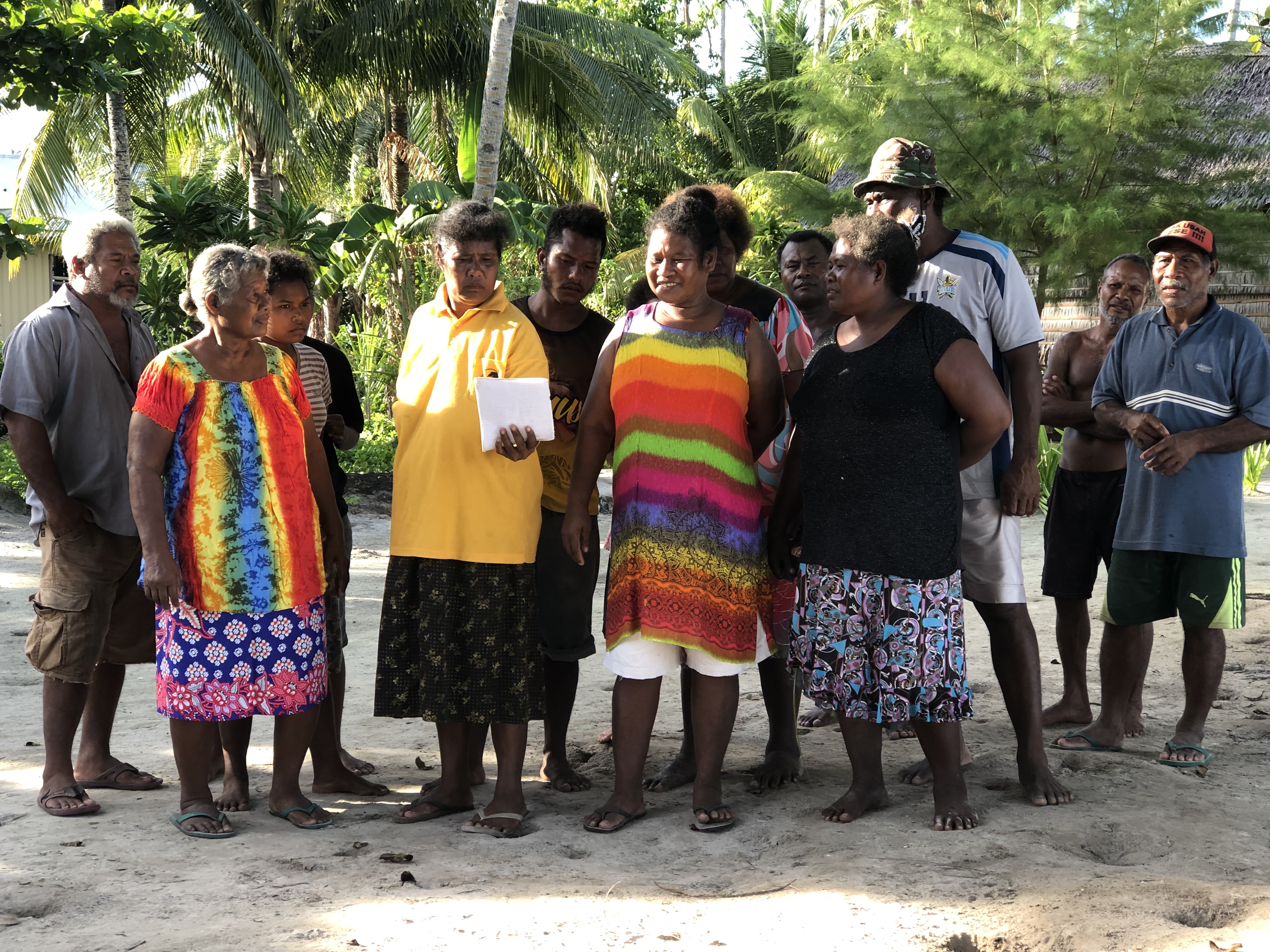
The farewell choir
One family gave us a chicken to eat on the journey (dead in case you were wondering). We sailed away to a small crowd gathered on the point to wave us off and a few small tears may have been shed.

























